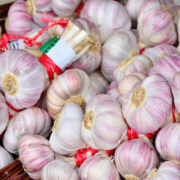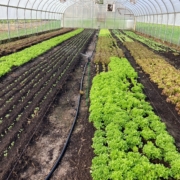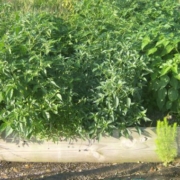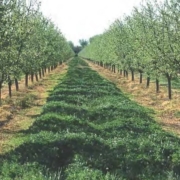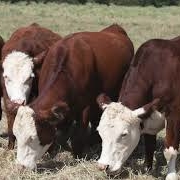Awesome Alliums
 Print This Post
Print This Post
By Justin Duncan, NCAT Agriculture Specialist
I have had many Allium adventures, growing them from seeds and from sets from items found in the grocery store. In fact, one of the things that got me hooked on growing things as a child was snatching a sprouting onion from my mother’s kitchen and planting it, only to see it develop into three distinct onion plants. Propagation was always such a fascinating concept to me.
Alliums have developed many methods of propagation, depending upon local adaptive needs of the various species within the genus. For example, Allium cepa (common onions) are generally grown from seeds but if allowed to continue growing, the bulb will divide itself the following season. In onion production, this trait is a bit of a nuisance because it causes there to be more than one “center” within the bulb and some consumers would prefer a perfect concentric ring pattern. On the other hand, this bulb-splitting trait is desirable in Allium sativa (garlic) and come harvest time, collecting a solid uni-bulb garlic is kind of weird. Also weird is the ability to grow bulbils amongst the flowers, such as with Allium canadense and some other species. These bulbil-forming species are a triple threat because they also set seed and the bulbs also divide, which can translate into weed potential.
Alliums tell you they are there and here to stay through their sheer power of production, but they also have a particular smell that alerts us to their presence. These sulfur-rich plants alerted ancient people that there was something peculiar about this plant and in the Northern Hemisphere, they became a staple not only as food but also as medicine for many indigenous cultures. Interestingly, the Southern Hemisphere missed out on the bounty of this genera, and a look at the species distribution map flummoxes my plant-breeder brain as to the why and how of there being only one species in the southern Hemisphere, in South Africa, and only two in the tropics, one in Central America and one in Sri Lanka. I would love to see the dendrology—genetic relatedness—chart of those species! My speculation is that long ago, a seed hitchhiked on a migrating bird and germinated and over time its progeny became distinct from other species as a reaction to local conditions, since we know that birds move from North to South and vice versa.
But I digress. The point is that since there is a huge diversity of genetic divergence within this genus, there is also a range of choices of Alliums that we can grow in the home garden or farm. There are many things to consider, such as soil drainage, day length, and end–uses, as well as whether there are pests and diseases present and whether the growing conditions in your production area are conducive to those pests and diseases. Having spoken to local producers and growing several different species in various ways, I personally settled upon leeks and elephant garlic, which are both Allium ampeloprasum. Not only do I love the flavor of these Alliums, but they also grow GREAT for me. Those who know me know that I have streamlined production to only trouble-free and reliable plants that don’t need a lot of babying. Which Allium do you grow and why?
Related ATTRA Resources:
Scheduling Vegetable Plantings for Continuous Harvest
This blog is produced by the National Center for Appropriate Technology through the ATTRA Sustainable Agriculture program, under a cooperative agreement with USDA Rural Development. ATTRA.NCAT.ORG.

